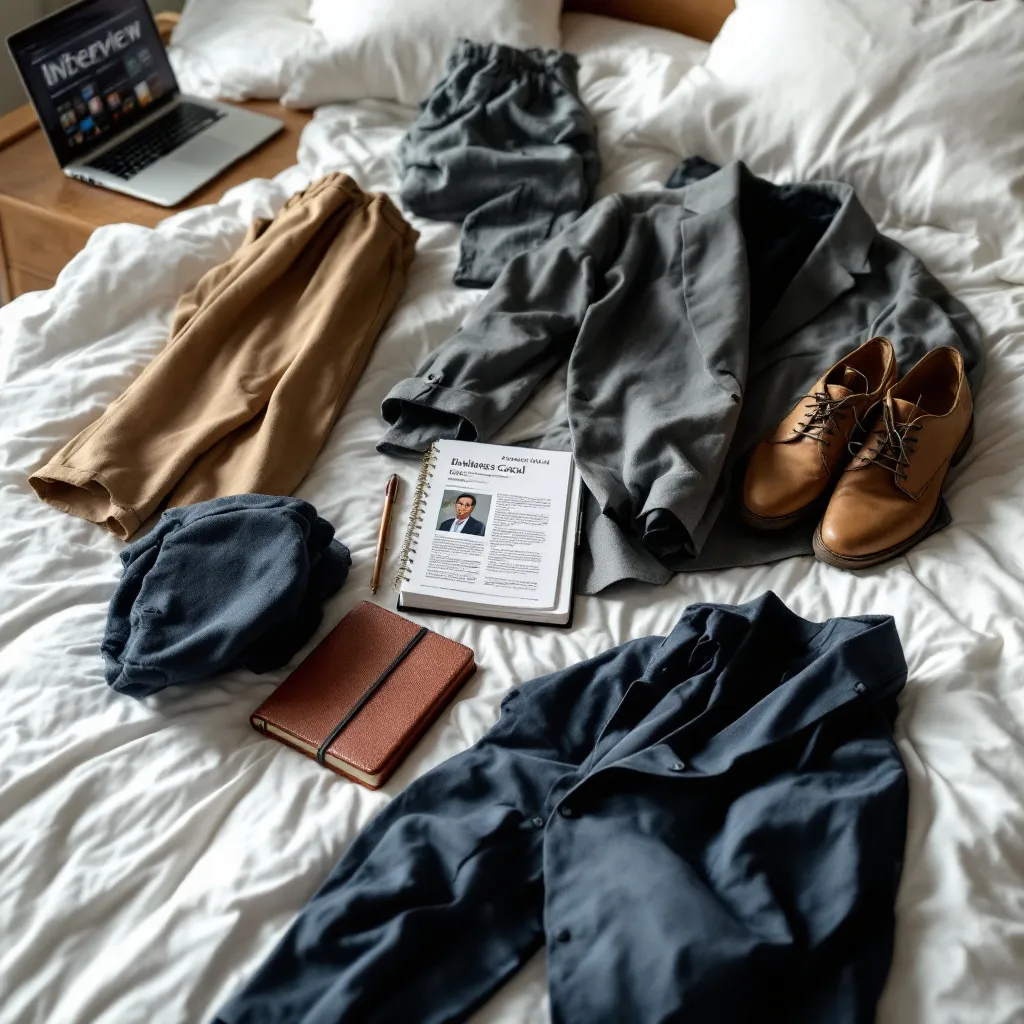Summer brings unique challenges when it comes to job interviews. While you want to make a stellar first impression, the sweltering heat can make traditional interview attire uncomfortable or impractical. This guide will help you navigate the tricky balance between professional presentation and seasonal comfort, ensuring you look polished while staying cool during your summer job interviews.
Understanding the Summer Interview Dress Code Challenge
The summer interview presents a distinct challenge: maintaining professionalism while managing heat and humidity. Research shows that first impressions form within seconds, and your appearance plays a critical role in how potential employers perceive you. According to Monster, even summer interviews demand attire that aligns with industry expectations.
Different sectors maintain varying dress code standards even during warmer months. Financial and legal firms typically expect more formal attire, while tech startups and creative agencies often embrace business casual. Before selecting your outfit, research the company culture through their website, social media, or by speaking with current employees to understand expectations.
Your choice of fabric becomes particularly important in summer. Natural materials like cotton and linen offer breathability but wrinkle easily, while synthetic blends provide wrinkle resistance but may trap heat. Finding the right balance is key to looking put-together throughout your interview.
Essential Summer Interview Outfit Foundations
Do’s and Don’ts for Summer Interview Attire
When selecting your summer interview wardrobe, focus on these foundations:
| Do | Don’t |
|---|---|
| Choose lightweight wool or linen-blend suits | Wear 100% linen (excessive wrinkles) or polyester (traps heat) |
| Opt for tailored, breathable shirts | Select sheer fabrics or low necklines |
| Select neutral-colored dresses with structured blazers | Choose bold patterns or athleisure wear |
For all genders, lightweight fabrics that maintain structure are ideal. Brands like J.Crew offer summer-weight wool suits that look professional while providing breathability. Uniqlo’s AIRism line provides breathable shirt options that resist wrinkles and wick moisture.
Color selection matters significantly during summer. While darker colors hide potential sweat stains, they absorb more heat. Light neutrals like beige, light gray, or pale blue offer a professional appearance while reflecting heat. Save vibrant colors for subtle accents rather than main pieces.
Layering becomes strategic in summer interviews. Many offices keep air conditioning at full blast, creating a significant temperature difference between outdoors and indoors. Consider wearing a lightweight blazer that can be removed during your commute and donned before entering the building.
Industry-Specific Summer Interview Attire
Corporate and Finance Settings
In traditional business environments like banking, consulting, or law, formality remains paramount despite the season. For these bank interview outfits, consider:
- Men: Light-gray unlined wool suit with a crisp white shirt and subtle tie
- Women: Knee-length sheath dress in a neutral tone with a lightweight blazer
- All genders: Closed-toe shoes regardless of season (no sandals)
Brooks Brothers and MM.LaFleur offer excellent options for these settings. Even in extreme heat, avoid short sleeves or casual footwear, as these environments prioritize traditional professionalism.
Creative and Casual Industries
Tech companies, marketing firms, and creative agencies typically maintain more relaxed dress codes. However, interviews still warrant elevated versions of daily attire. Consider:
- Chinos or tailored trousers paired with a short-sleeve collared shirt
- A casual blazer in cotton or linen blend over a simple top
- Polished loafers (like those from Clarks) or low block heels
In these settings, personality can shine through subtle choices while maintaining professionalism. Banana Republic’s linen shirts or Everlane’s sleeveless mock-neck tops paired with midi skirts offer appropriate options for these casual clothes to wear to an interview.
Hospitality and Customer-Facing Roles
For roles in retail, restaurants, or hospitality where you’ll interact directly with customers, your interview outfit should reflect understanding of the brand aesthetic while maintaining professionalism.
- Research the company’s style and elevate it slightly for your interview
- For retail positions, consider wearing an outfit that complements the store’s merchandise
- In food service interviews, prioritize neat, clean attire that demonstrates attention to detail
These settings often allow more flexibility with color and style while still expecting polished presentation.
Summer-Specific Accessories and Grooming Tips
Accessories should be minimal and functional during summer interviews. Select:
- Structured leather portfolio or slim briefcase instead of bulky bags
- Simple, non-distracting jewelry that won’t cause sweating
- Appropriate footwear like leather penny loafers for men or square-toe mules for women
Grooming requires special attention in summer. Use waterproof makeup products from brands like MAC Cosmetics that won’t melt in the heat. All genders should consider oil-blotting sheets from Clean & Clear to manage shine throughout the day.
For those with diverse hair textures, products like SheaMoisture’s styling creams can help maintain a polished look despite humidity. The goal is a fresh, neat appearance that will endure throughout your meeting.
Pre-Interview Preparation and Day-of Strategies
Preparation is crucial for summer interview success. Scale.jobs recommends testing your outfit for 1-2 hours before the interview day to check for comfort, visible sweat marks, and ease of movement.
Consider these day-of strategies:
- Strategic commuting: If possible, arrive early and change from commute-friendly clothes into your interview outfit at a nearby cafe or the building’s restroom
- Beat the heat: Use cooling towels or portable handheld fans during your commute
- Prepare an emergency kit: Include oil-blotting sheets, a stain removal pen, mints, and a travel-size antiperspirant
These preparations complement your interview knowledge. While focusing on your outfit, don’t neglect preparing answers to behavioral interview questions and practicing your best interview skills.
Final Thoughts
A successful summer interview outfit balances professionalism, comfort, and awareness of company culture. Your attire should demonstrate attention to detail and respect for the opportunity while adapting to seasonal realities.
Remember that while appearance matters, your preparation for interview questions and answers remains paramount. A polished outfit creates a positive first impression, but your knowledge, experience, and communication skills ultimately secure the position.
By following these guidelines, you’ll arrive at your summer interview feeling confident and comfortable, ready to focus on showcasing your qualifications rather than worrying about your appearance. ResuFit can help you prepare not just your outfit but your entire interview strategy, from resume optimization to interview practice.




















